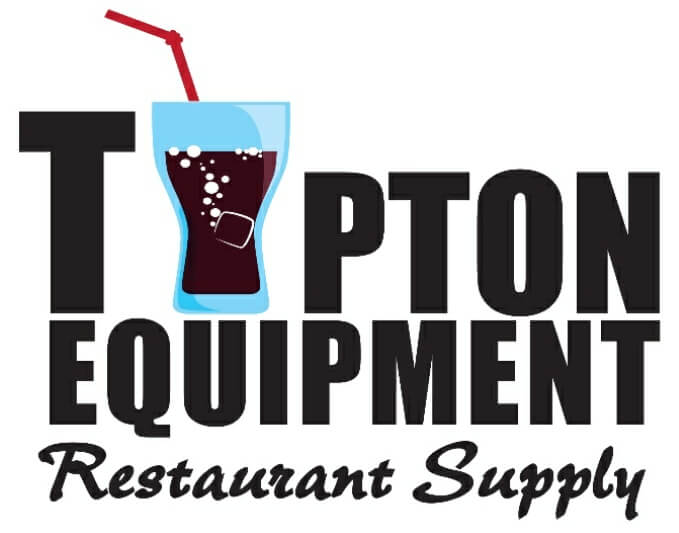Restaurant Supplies: How to Properly Store Spirits & Drinks
August 13, 2018Spirits and other alcoholic drinks can add a lot to your bottom line as a restaurant.
These drinks often have high margins, and people order more than one frequently. This leads to more revenue for your restaurant and better tips for your servers!
In order to make the most of your inventory of spirits and drinks, it’s vital to store it properly. Like all restaurant supplies, you can extend the life and usefulness of your alcohol with correct treatment.
Avoid Sunlight
Different types of alcohol have different needs, but one thing they have in common is that they suffer in the sun. In most restaurants this isn’t a big problem – most bars or storage areas aren’t near a window.
But, it pays to think about this if you’re working on creating a restaurant layout or setting up your bar. Windows and natural light can add a lot to the ambiance, but you want to make sure it doesn’t affect your spirits.
Best Practices for Beer Storage
Beer, like many other drinks, needs specific temperatures to be at their best. This temperature should be steady and cool.
Here are the ideal temperature ranges for each type of beer:
- Average: 50-55 degrees F
- Strong Beers: 55-60 F
- Standard Ales: 50-55 F
- Lighter Beers: 45-50 F
Beer should also be stored standing up, not laying on its side. If beer lays on its side over time, a yeast ring can form inside the bottle. In addition, upright storage decreases oxidation.
Storing Wine Well
If you serve a lot of wine in your restaurant, it pays to invest in wine storage solutions. Restaurant supplies like a wine refrigerator or a wine cellar are great ideas.
The temperatures for storing wine are pretty simple – there’s one for red and one for white.
- Average (red): 50-55 degrees F
- Average (white): 45 degrees F
When you place your wine in storage, it’s important to store it on its side. Corks have a tendency to dry out over time, and wine laying down will keep the cork moist.
However, champagne should be stored upright, along with other sparkling wines.
What to Do With Whiskey
Whiskey and other spirits can be stored at room temperature. This makes it easy to stock a bar attractively, by displaying it on shelving directly behind the bar.
Whiskey and spirits should be stored upright. If it’s on its side, the strong alcohol will eat through the cork. One thing to keep in mind with whiskey and strong alcohol is that once it’s opened, it won’t last forever. Once it’s below one-quarter full, it’s time to focus on using it up.
Taking proper care of your restaurant supplies, including your drinks and liquor, will help you maximize revenues and keep costs down.
Get the Restaurant Supplies You Need Today
When you’re taking proper care of your drinks, you need reliable restaurant supplies for storage. Whether you want a wine cabinet or a refrigerator to keep your beer at the right temperature, Tipton Equipment Supply is here to help.
We’re proud to serve Little Rock restaurants and we’d love to help you locate exactly what you need. Contact us for more information today!
5 Things Every Restaurant Owner Should Do Before Buying Used Kitchen Equipment
Equipping your restaurant properly can cost a lot of money, so buying used kitchen equipment is the go-to choice for many restaurateurs. Buying used kitchen equipment for a restaurant is a bit different than buying used equipment for your home, however. You will...
Top Restaurant Technology Trends in 2018
When looking to buy restaurant supplies, you want to be on the leading edge of technology trends. This will keep your kitchen running smoothly. Let’s take a look at some of the most recent trends in restaurant supplies technology. 1. New Payment Options Who would...
5 Different Ice Shapes and Why You Should Care About Them
Ice makers are very popular in the restaurant and foodservice community because they eliminate the need to buy ice every day. And of course, adding an ice maker to your collection of foodservice equipment means you will always have ice on hand when you need it. An...
Pulping and Grinding: A Starter’s Guide to Reducing Commercial Food Waste Costs
For most restaurant owners and managers, the expenses involved in making meals are always under careful consideration. Water is needed to prepare, cook and wash food; power is necessary for food prep, cooking and cooling, and so on. However, how many of us consider...
Choosing the Right Milk Cooler: Cold Wall or Forced Air?
In a restaurant, milk is an essential to have on hand for coffee and other café-style beverages, for serving with kids’ meals, and as a key ingredient in many recipes. Keeping your milk properly chilled can be difficult without the proper restaurant equipment....
How to Choose Your Next Commercial Meat Smoker
The movies that connect with us on a personal level are the ones that linger in our memories forever. Anyone who has used a commercial meat smoker knows that they have a huge influence on the taste of a meal. You need to have just the right kitchen equipment to get a...
Are High Speed Ovens Too Good to be True?
You might have heard a few of the bold claims that foodservice equipment manufacturers have been making about high speed ovens, but they can’t be possible, right? Cooking three times as faster as regular ovens? Five times as fast? Fifteen times as fast? It may seem...
Choosing the Right Food Storage Containers for Your Restaurant
Choosing the right kitchen supplies will make a difference in your restaurant. Whether it is heavy duty kitchen equipment or food storage containers, each piece of equipment plays its own important role. Today, we are going to talk about how to choose the right food...
Tipton’s Guide to Perfect Poultry Trussing
Do you ever truss birds in your commercial kitchen? Trussing is a fantastic cooking technique because it makes poultry cook faster, look more attractive and taste better. If your commercial kitchen prepares poultry, you don’t want to miss these trussing tips. Trussing...
How to Eliminate Excess Condensation in Your Kitchen
Is your commercial kitchen getting steamy? If so, you could have more than just an uncomfortable working environment on your hands. Excess moisture in your commercial kitchen can result in the corrosion of equipment, the development of mold, and even damage to your...
The DIY Guide to Your Restaurant’s Own Garden
Stocking your restaurant supply with your own home-grown herbs and produce can truly bring your dishes to life. When it comes to food, everyone knows there’s nothing like homemade and home-grown. Having your own culinary garden, however large or small, can help you...
5 Reasons a Meat Grinder Will Set Your Burgers Apart
The more you do to prepare your foods in-house with the right kitchen equipment, the fresher and more flavorful your dishes become. There are all sorts of restaurants offering fast-food style burgers, but some diners are looking for the real deal. A fresh, juicy...
Pest Preventions to Implement in Your Commercial Kitchen
Restaurant pests: it’s something that few people want to think about. Like it or not, pest management is an essential consideration for every commercial kitchen. Offering food, shelter and water, the unprepared commercial kitchen naturally provides everything pests...
Choosing the Right Material for Your Cooking Equipment
Kitchens are very unique to their chef. Just like a car mechanic has a toolbox unique to them, so is the cooking equipment in a kitchen. And over time, the same cooking equipment become a natural extension of the chef. What tools are you using in your kitchen? It...
Kitchen Hacks for Your Home
Some people are naturally good at certain skills. We all know someone who is naturally book smart, athletic, or musically inclined. What makes you jealous of them is how easy they make tasks seem compared to you. One skill might be cooking. Your dream may not be...















